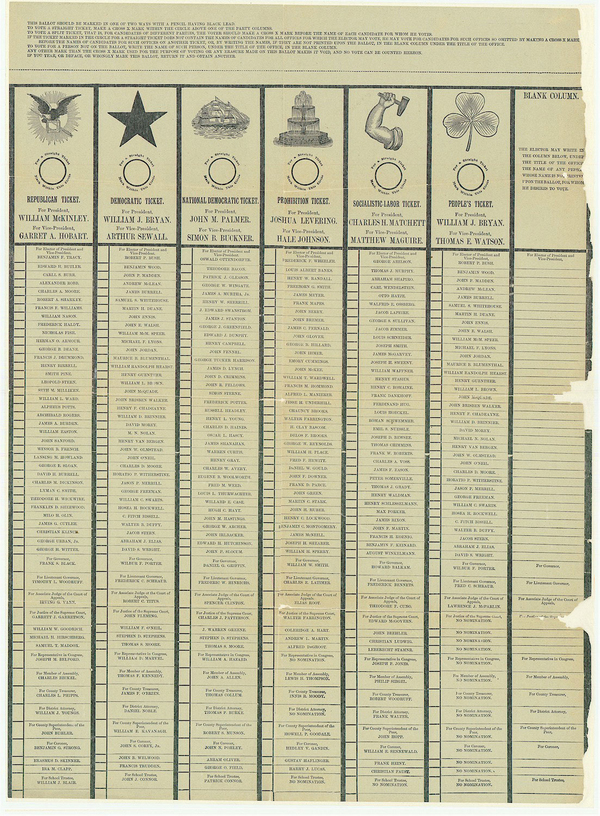McKinley Blanket Ballot
Annotation
In the first half of the nineteenth century, voting procedures differed by location; in some areas in the South, men (and in those days only men) voted out loud when their name was called or signed their name in a poll book under the preferred candidate's name. By the 1850s, nearly all states used written ballots placed in a box or handed to an official. As the number of elected offices increased, printed ballots gradually replaced handwritten ones, and political parties began to prepare printed ballots, both to assist and to monitor their voters. The blanket ballot, developed in Australia, was gradually adopted in the U.S. after 1888. It listed all candidates and was printed by the city or the state, rather than by the political parties, as had been the case previously. This ballot—printed for the 1896 election—lists several different offices in addition to President, such as Governor and Congressional representative. Notice that William Jennings Bryan is listed for more than one ticket, although he has a different vice president for each party.

Source
"McKinley Blanket Ballot," National Museum of American History.